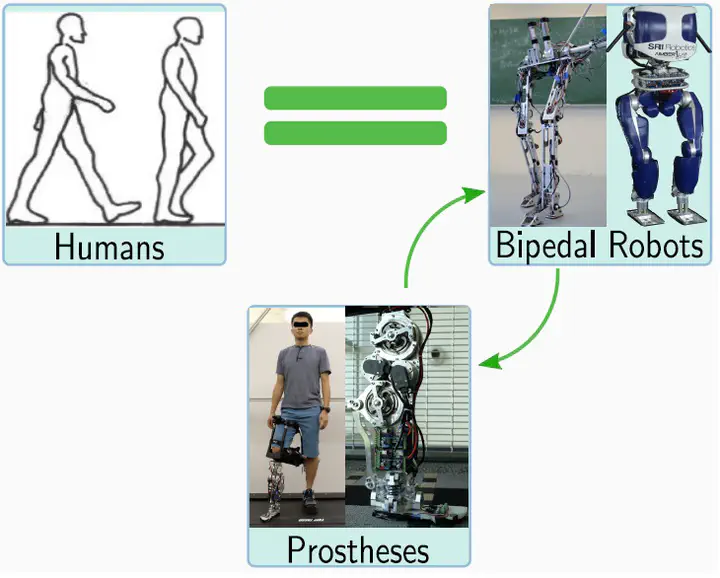3D multi-contact gait design for prostheses: Hybrid system models, virtual constraints and two-step direct collocation

Abstract
Virtual constraints have been recognized as an essential bridging tool which has the potential to translate rich nonlinear bipedal control methodologies to the control of prostheses. In this paper, we propose a hybrid system model based two-step direct collocation approach to automatically generate three-dimensional (3D) human-like multi-contact prosthetic gaits (via virtual constraints) for an asymmetric amputee-prosthesis system model. Unimpaired human locomotion is studied first to provide a reference for this gait design method. Specific requirements—such as amputee comfortability, human-likeness, physical limitations for hardware implementation—are then discussed explicitly in order to quantify a well-designed prosthetic gait. A 29 degrees of freedom 3D unsymmetrical bipedal robotic model is considered to model the asymmetric amputee-prosthesis system. Imposing the prosthetic gait requirements as nonlinear constraints and utilizing the asymmetric 3D hybrid system model, a two-step direct collocation based optimization method is proposed to generate 3D prosthetic gaits automatically. The resulting prosthetic gait is analyzed in detail, showing the designed multi-contact gait is human-like, formally stable and optimal w.r.t the requirements.